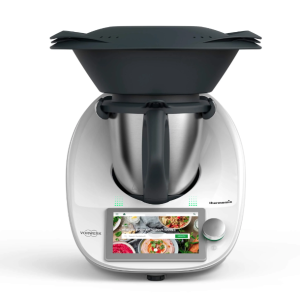Single mum manages to save $2500 a year by avoiding these supermarket staples
By
VanessaC
- Replies 28
In the current economic climate, the cost of living is a concern for many Australians, especially for single parents.
The rising prices of everyday items at the local supermarket can be a significant burden on the family budget.
However, one single mum from Western Australia has found a clever way to circumvent this issue, saving an estimated $2,500 a year by avoiding supermarket staples and opting for healthier, homemade alternatives.
Jacinta Fiegert, a resident of Wattle Grove, is the proud mum of a nearly three-year-old daughter, Anaya.
Like many single parents, Jacinta has felt the financial strain of providing for her child.
'Being a single parent means funds are tight, and sometimes choices need to be made about what I can afford for my family,' she shared.
'The rising cost of living has forced me to be resourceful where I can be, but I still want to eat delicious and healthy meals.'
In her quest to find a solution to the rising cost of living, Jacinta stumbled upon the Thermomix, a versatile kitchen appliance that has become her secret weapon in the battle against high grocery bills.
Initially, she used the Thermomix to make her own baby food, a move that not only saved her money but also ensured her daughter was eating healthy, homemade meals.
'When my daughter was small, I used the Thermomix to make my own baby food. As other parents know, supermarket baby food can be expensive.'
As Anaya grew, Jacinta expanded her use of the Thermomix to prepare various meals.
'I can set the controls and leave the machine to cook us delicious meals from scratch, saving money and giving me time back in the day to spend with my daughter.'
'By making my own, I was able to save $2,500 a year,' the frugal mum said.
The savings didn't stop at meals.
Jacinta also started making her own pantry staples, such as bread, muffins, cakes, pasta and curry sauces, and even vegetable stock.
'Instead of buying vegetable stock, I make my own with “ageing” vegetables which I always have in the fridge and forms the basis of most recipes,' she says.
'I make big batches of pasta sauces and soups using vegetables that are on special which is so much cheaper than buying in-store.'
By making these items herself, Jacinta has saved money—along with other benefits.
'I also know exactly what is in the food Anaya is eating which gives me peace of mind,' she said.
'I used to make puree mixes made from her favourite fruits and vegetables such as pumpkin, apple and carrot, and broccoli and sweet potato.'
'Now I make all our pasta and curry sauces, soups and baked goods myself.'
'Food like bread, muffins and cakes are so much cheaper when you make them yourself and they are free from additives and extra sugar.'
The Thermomix, while a significant initial investment priced at $2,579, has proven to be a money-saver in Jacinta’s case.
However, it's important to note that the savings depend on how frequently you use the machine and the cost of the ingredients you need to make the items yourself.
For instance, making yoghurt and ice cream requires buying a packet of milk powder, which can be a costly addition to your shopping cart.
Similarly, making spices from scratch can add up if you buy multiple packets of different seeds and spices. It may be cheaper to just buy a pack of spice mix.
Despite these, Jacinta's strategy of avoiding supermarket staples and opting for homemade alternatives has led to significant savings.
The money she saved allowed her to purchase things her family needed.
'With this extra money I upgraded my old car to a safer second-hand car,' she shared.
'Also, with the money I save, I can spoil my daughter with a new toy or clothes without feeling guilty about deciding between that and food.'
 What are your thoughts on this? Have you found creative ways to save money on your grocery bills? Share your opinions and tips in the comments below.
What are your thoughts on this? Have you found creative ways to save money on your grocery bills? Share your opinions and tips in the comments below.
The rising prices of everyday items at the local supermarket can be a significant burden on the family budget.
However, one single mum from Western Australia has found a clever way to circumvent this issue, saving an estimated $2,500 a year by avoiding supermarket staples and opting for healthier, homemade alternatives.
Jacinta Fiegert, a resident of Wattle Grove, is the proud mum of a nearly three-year-old daughter, Anaya.
Like many single parents, Jacinta has felt the financial strain of providing for her child.
'Being a single parent means funds are tight, and sometimes choices need to be made about what I can afford for my family,' she shared.
'The rising cost of living has forced me to be resourceful where I can be, but I still want to eat delicious and healthy meals.'
In her quest to find a solution to the rising cost of living, Jacinta stumbled upon the Thermomix, a versatile kitchen appliance that has become her secret weapon in the battle against high grocery bills.
Initially, she used the Thermomix to make her own baby food, a move that not only saved her money but also ensured her daughter was eating healthy, homemade meals.
'When my daughter was small, I used the Thermomix to make my own baby food. As other parents know, supermarket baby food can be expensive.'
As Anaya grew, Jacinta expanded her use of the Thermomix to prepare various meals.
'I can set the controls and leave the machine to cook us delicious meals from scratch, saving money and giving me time back in the day to spend with my daughter.'
'By making my own, I was able to save $2,500 a year,' the frugal mum said.
The savings didn't stop at meals.
Jacinta also started making her own pantry staples, such as bread, muffins, cakes, pasta and curry sauces, and even vegetable stock.
'Instead of buying vegetable stock, I make my own with “ageing” vegetables which I always have in the fridge and forms the basis of most recipes,' she says.
'I make big batches of pasta sauces and soups using vegetables that are on special which is so much cheaper than buying in-store.'
By making these items herself, Jacinta has saved money—along with other benefits.
'I also know exactly what is in the food Anaya is eating which gives me peace of mind,' she said.
'I used to make puree mixes made from her favourite fruits and vegetables such as pumpkin, apple and carrot, and broccoli and sweet potato.'
'Now I make all our pasta and curry sauces, soups and baked goods myself.'
'Food like bread, muffins and cakes are so much cheaper when you make them yourself and they are free from additives and extra sugar.'
The Thermomix, while a significant initial investment priced at $2,579, has proven to be a money-saver in Jacinta’s case.
However, it's important to note that the savings depend on how frequently you use the machine and the cost of the ingredients you need to make the items yourself.
For instance, making yoghurt and ice cream requires buying a packet of milk powder, which can be a costly addition to your shopping cart.
Similarly, making spices from scratch can add up if you buy multiple packets of different seeds and spices. It may be cheaper to just buy a pack of spice mix.
Despite these, Jacinta's strategy of avoiding supermarket staples and opting for homemade alternatives has led to significant savings.
The money she saved allowed her to purchase things her family needed.
'With this extra money I upgraded my old car to a safer second-hand car,' she shared.
'Also, with the money I save, I can spoil my daughter with a new toy or clothes without feeling guilty about deciding between that and food.'
Key Takeaways
- Single mum Jacinta Fiegert has found a way to save $2500 a year by making her own food and pantry staples with a Thermomix.
- Making her own food reduced costs and gave Jacinta assurance of what her child was eating, knowing there were no hidden ingredients.
- Jacinta uses 'ageing' vegetables to make her homemade stock, and likes to cook pasta sauces and soups in big batches using vegetables that are on special, which significantly reduced her grocery bill.
- Jacinta's savings have allowed her to upgrade her car and spoil her daughter occasionally without worrying about compromising food quality.








